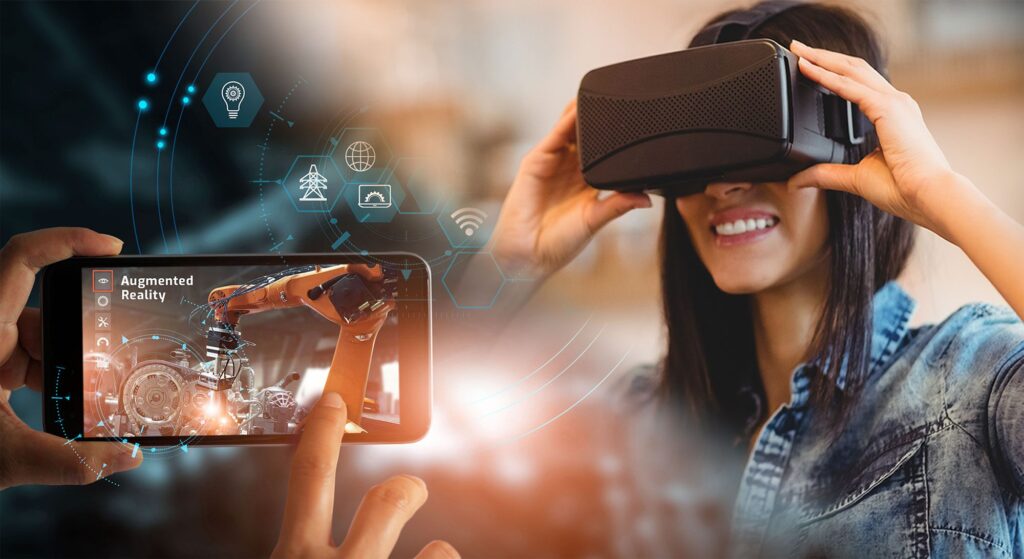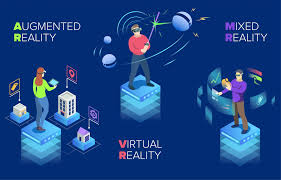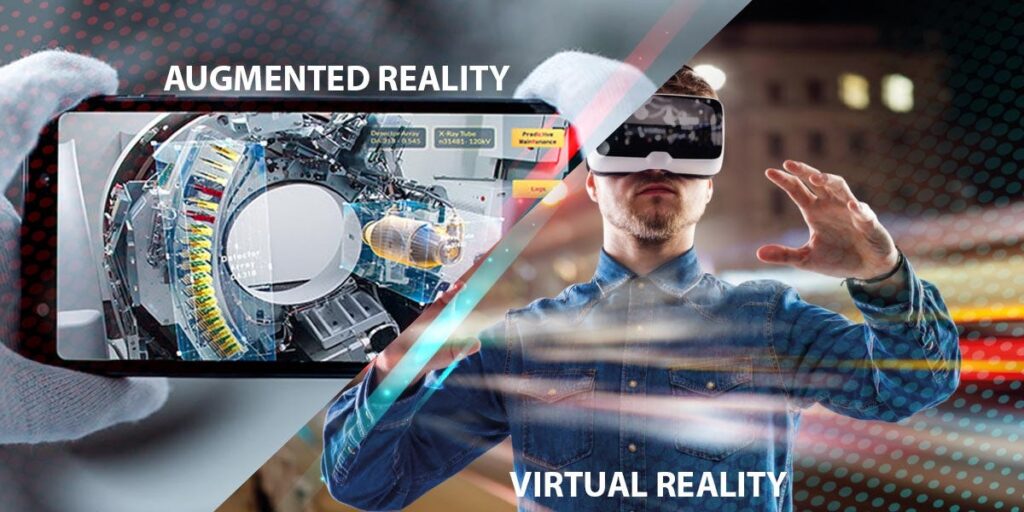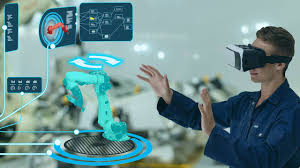
Introduction
Augmented Reality (AR) and Virtual Reality (VR) training are revolutionizing education and skill development across various industries. These immersive technologies create realistic and interactive environments that enhance learning experiences by simulating real-world scenarios. While VR provides a fully digital experience by immersing users in a virtual world, AR overlays digital content onto the real environment, enhancing real-time interaction. Industries such as defense, healthcare, aviation, and manufacturing are increasingly adopting AR and VR training solutions to improve efficiency, safety, and knowledge retention.
How AR and VR Training Works

- Virtual Reality (VR) Training: VR training immerses users in a 3D digital environment using head-mounted displays (HMDs) and motion controllers. This allows learners to practice skills in simulated scenarios without real-world risks. For example, pilots can train in VR flight simulators before handling actual aircraft.
- Augmented Reality (AR) Training: AR training uses smart glasses, tablets, or AR headsets to overlay virtual elements onto the physical world. This is useful for on-the-job training, where workers receive real-time visual instructions without interrupting their workflow. A technician repairing machinery, for example, can use AR to see step-by-step instructions projected onto the equipment.
Applications of AR and VR Training

- Military and Defense: Soldiers use VR for combat simulations, tactical training, and battlefield strategy exercises, while AR assists with real-time data visualization in mission planning.
- Healthcare and Medical Training: Surgeons practice complex procedures in VR, reducing risks before operating on real patients, while AR helps in anatomy visualization and remote assistance during surgeries.
- Aviation and Aerospace: Pilots undergo VR-based flight simulations to enhance their skills in handling emergencies, and AR is used for aircraft maintenance training.
- Manufacturing and Maintenance: AR provides real-time guidance for workers assembling complex machinery, reducing errors and improving efficiency. VR is used for safety training in hazardous environments.
- Corporate and Soft Skills Training: Businesses use VR for leadership training, public speaking simulations, and virtual customer service scenarios to improve employee communication and decision-making.
Advantages of AR and VR Training
- Risk-Free Learning: Provides hands-on experience in a controlled environment, reducing risks in high-stakes professions like medicine and aviation.
- Cost-Effective: Minimizes the need for physical training resources, travel, and equipment, saving costs for organizations.
- Enhanced Engagement and Retention: Immersive learning experiences improve focus, motivation, and knowledge retention compared to traditional training methods.
- Remote and Scalable Training: AR and VR training can be accessed globally, allowing companies to train employees remotely without location constraints.

Challenges and Limitations
- High Initial Investment: Developing AR and VR training programs requires significant upfront costs for hardware, software, and content creation.
- Hardware Limitations: Some VR headsets and AR devices are bulky, expensive, and may cause discomfort during prolonged use.
- Technical and Software Requirements: High-quality VR training requires powerful computers and graphics processing, which may not be accessible to all users.
- User Adaptation and Learning Curve: Some individuals may experience motion sickness in VR or require time to adapt to the new technology.
Future of AR and VR Training

With advancements in AI, haptic feedback, and 5G connectivity, AR and VR training will become even more immersive and accessible. Future developments may include AI-driven virtual trainers, real-time collaboration in virtual spaces, and more lightweight and affordable AR/VR hardware. As industries continue to adopt these technologies, AR and VR training will play a crucial role in shaping the future of skill development and workforce training.


